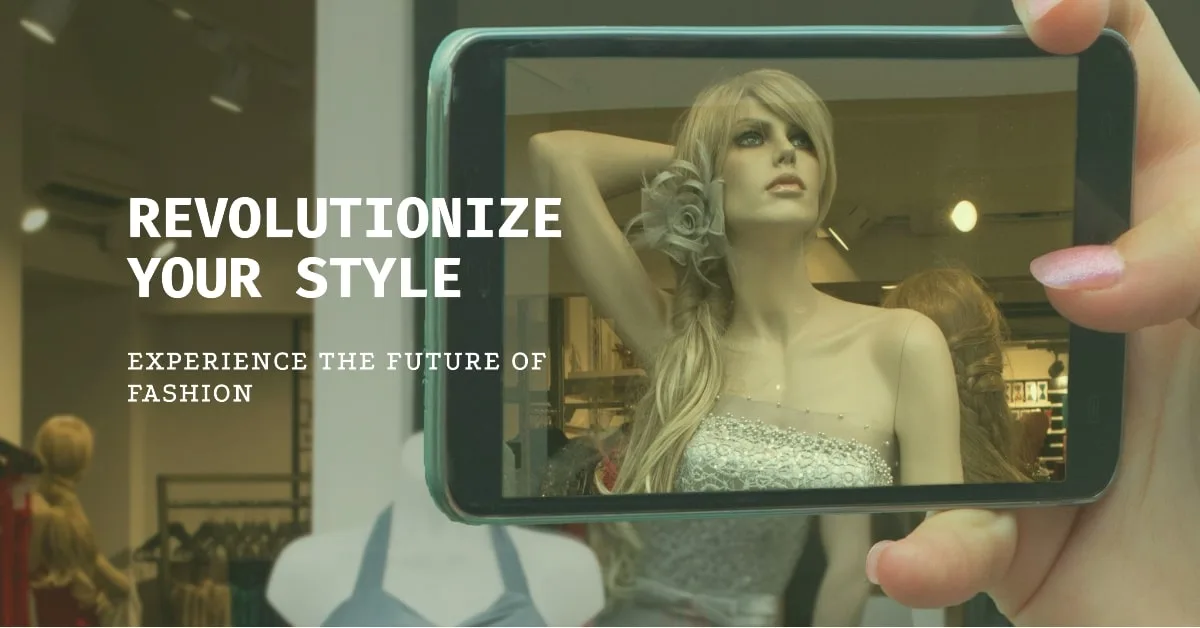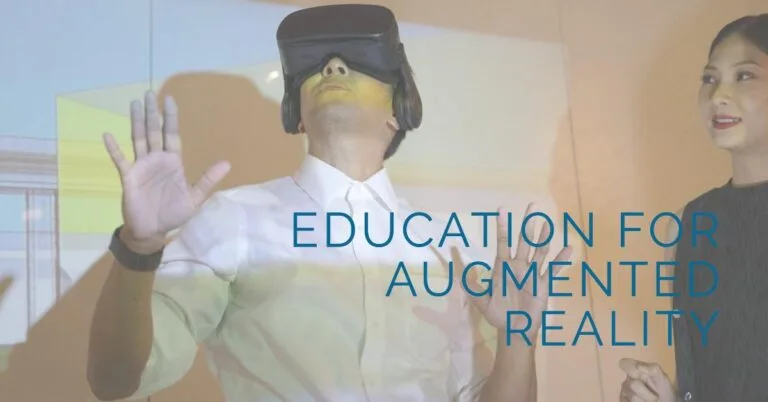
World of AR Clothing: Revolutionizing How We Shop and Dress
Imagine stepping into a virtual fitting room, trying on clothes from the comfort of your couch, and seeing how they look on you in real time – all without ever leaving your house. This is the magic of AR Clothing, a revolutionary technology that’s merging the physical and digital worlds of fashion.
What exactly is AR Clothing?
AR Clothing, or Augmented Reality Clothing, utilizes smartphone cameras and AR software to overlay digital garments onto your physical body. This allows you to virtually “try on” clothes before you buy them, eliminating the hassle of endless trips to fitting rooms and the frustration of clothes not fitting quite right.
But AR Clothing goes beyond just convenience. It’s transforming the fashion industry by:
- Enhancing the shopping experience: AR virtual try-on tools let you experiment with different styles and sizes, boosting your confidence in your purchases.
- Promoting sustainability: By reducing unnecessary returns and in-store try-ons, AR Clothing contributes to a more eco-friendly fashion industry.
- Personalizing fashion: AR apps can recommend styles based on your body type and preferences, creating a more personalized shopping experience.
Defining AR in the Context of Fashion
Augmented reality (AR) is a technology that superimposes computer-generated images on a user’s view of the real world, thus providing a composite view. In the context of fashion, AR allows you to see digital representations of clothing items overlaid onto your physical body through your smartphone camera. This creates a realistic simulation of how the garment would look on you, allowing you to experiment with different styles and sizes before making a purchase.
The Evolution of AR in the Fashion Industry
The concept of AR in fashion isn’t entirely new. Early iterations involved using computer graphics to showcase clothing on virtual models. However, the technology has come a long way in recent years. Here’s a glimpse into the evolution of AR in fashion:
- Early Days (2010s): Simple AR apps emerged, allowing users to virtually try on basic accessories like sunglasses or hats.
- Rise of Mobile Technology (2010s-2020s): The proliferation of smartphones with powerful cameras and processors paved the way for more sophisticated AR experiences.
- Modern AR Clothing (2020s-Present): Advanced algorithms and 3D modeling techniques allow for highly realistic virtual try-on experiences that consider factors like body shape, lighting, and even fabric drapes.
As AR technology continues to evolve, we can expect even more immersive and interactive experiences in the future.
Understanding the Technology: The Mechanics of AR in Clothing
Let’s delve deeper into the mechanics behind AR Clothing and how it works:
- App Power: AR Clothing experiences are typically accessed through mobile apps developed by fashion brands or retail stores. These apps leverage AR software development kits (SDKs) to integrate AR functionalities.
- Camera Activation: Once you launch the app, you’ll be prompted to activate your smartphone camera. This allows the app to capture a live video feed of your body.
- Body Recognition: Advanced algorithms within the app analyze the video feed to recognize your body shape and dimensions. This creates a digital representation of your body in 3D space.
- Virtual Overlay: The chosen AR Clothing item is then overlaid onto your 3D body model in real time. Sophisticated rendering techniques create a realistic simulation of how the garment would look on you, including factors like lighting and fabric movement.
- Customization Options: Some AR Clothing apps allow you to adjust the size, color, and even pattern of the virtual garment. This lets you experiment with different variations of the same item and find the perfect fit and style for you.
Software and Hardware: Bringing AR to Life
The magic of AR Clothing lies in the interplay between software and hardware:
Software:
- AR SDKs: Software development kits (SDKs) provide the building blocks for creating AR experiences. These kits offer tools and libraries that developers can utilize to integrate AR functionality into their apps. Popular AR SDKs in fashion include Apple’s ARKit and Google’s ARCore.
- 3D Modeling Software: Fashion designers and developers use 3D modeling software to create digital representations of clothing items. These 3D models are then optimized for AR experiences, ensuring realistic rendering and accurate size and fit simulations.
Hardware:
- Smartphones: The rise of powerful smartphones with high-resolution cameras and advanced processors has been instrumental in the widespread adoption of AR Clothing. These devices provide the necessary hardware foundation to capture user input, process AR data, and render realistic virtual try-on experiences.
- Depth Sensors (Optional): While not always necessary, some AR Clothing experiences utilize depth sensors in smartphones or standalone devices. Depth sensors capture information about the distance between the camera and different parts of your body, allowing for even more precise and realistic garment placement in the virtual try-on process.
Innovations on the Horizon: The Future of AR Clothing
The future of AR Clothing is brimming with exciting possibilities. Here are some trends to watch out for:
- More Sophisticated Technology: Advancements in areas like computer vision, 3D modeling, and artificial intelligence (AI) will lead to even more realistic and accurate virtual try-on experiences. Imagine AR Clothing that can simulate the drape and movement of different fabrics, or even account for factors like body posture and movement.
- Social Shopping with AR: Imagine virtually trying on clothes with friends in a shared AR environment. This could revolutionize the way we shop together, allowing for real-time feedback and collaborative style exploration. Social AR platforms could also facilitate interactive fashion shows and events, blurring the lines between the physical and digital worlds of fashion.
- AR Clothing Customization: The ability to personalize and customize AR Clothing items to your unique style could become a reality. Imagine using AR tools to virtually add embellishments, change patterns, or even co-create custom garments with designers.
- Integration with Metaverse Fashion: AR Clothing could play a major role in the emerging world of Metaverse fashion. The Metaverse, a network of interconnected virtual worlds, allows users to create avatars and express themselves virtually. AR technology could be used to try on virtual clothing items for your Metaverse avatar, creating a seamless link between the physical and digital realms of self-expression.
Consumer Benefits: Revolutionizing the Shopping Experience
AR Clothing offers a plethora of benefits for consumers, making the shopping experience more convenient, personalized, and sustainable:
- Convenience: Try on clothes anytime, anywhere, without having to visit a physical store. No more endless trips to fitting rooms or waiting in lines – AR Clothing puts the power of trying on clothes at your fingertips.
- Confidence: See how clothes look on you before you buy them, reducing the risk of impulse purchases or clothes that don’t fit right. AR Clothing allows you to experiment with different styles and sizes, boosting your confidence in your fashion choices.
- Personalization: Discover styles and trends that complement your body type and preferences with personalized AR recommendations. Many AR Clothing apps use AI to analyze your body shape and suggest items that would flatter your figure. You can also create style profiles within the app to receive personalized recommendations based on your past purchases and browsing history.
- Sustainability: Contribute to a more eco-friendly fashion industry by minimizing returns and unnecessary in-store try-ons. AR Clothing helps to reduce garment waste and the environmental impact associated with traditional shopping practices.
- Accessibility: AR Clothing makes shopping more accessible for people with disabilities or those who live in remote areas. If you have difficulty getting to a physical store, AR Clothing allows you to try on clothes from the comfort of your home.
Retailer Advantages: Engaging the Modern Shopper
AR Clothing isn’t just beneficial for consumers – it offers a range of advantages for retailers as well:
- Engaging the Modern Shopper: AR technology provides a fun and interactive way to engage with customers and showcase products. This can lead to increased customer satisfaction and brand loyalty.
- Inventory and Returns Management: By allowing customers to virtually try on clothes before they buy, AR Clothing can help to reduce returns and improve inventory management for retailers.
- Valuable Insights from Consumer Interactions: AR Clothing apps can collect valuable data on customer preferences and behavior. This data can be used to inform product development, marketing strategies, and overall customer experience optimization.
Design and Creativity: AR as a Tool for Fashion Designers
AR technology can also be a powerful tool for fashion designers:
- Blending Art and Technology: AR allows designers to experiment with new ideas and create virtual prototypes of clothing before investing in physical production. This can save time and resources while allowing for greater creativity and innovation.
- Case Studies: Design Innovation through AR: Several fashion brands are already using AR to revolutionize their design processes. For example, Nike has developed an AR app that allows designers to virtually see how their designs would look on different body types in real time. This allows for more inclusive and size-appropriate designs.
Marketing and Branding: AR in Fashion Campaigns
AR can be a powerful marketing tool for fashion brands, helping to build brand identity and create engaging campaigns:
- AR in Fashion Campaigns: Brands can leverage AR technology to create interactive and immersive marketing campaigns. Imagine being able to virtually try on clothes featured in a magazine ad or on a model on a billboard. This can generate excitement and buzz around new collections and drive sales.
- Building Brand Identity with AR: AR experiences can be used to tell a brand’s story in a unique and engaging way. For example, a brand could create an AR experience that allows users to explore the inspiration behind a new collection or learn about the sustainable practices used in their clothing production. This can help to build a stronger brand identity and emotional connection with consumers.
- Success Stories: Marketing Strategies That Worked: Several brands have already seen success with AR marketing campaigns. For example, Sephora’s Virtual Artist app allows users to virtually try on makeup before they buy it. This campaign has been incredibly popular and has helped to boost Sephora’s sales.
Challenges in AR Clothing: Addressing Hurdles
While AR Clothing offers a wealth of benefits, some challenges need to be addressed:
- Technical Hurdles: AR technology is still evolving, and there can be limitations in terms of accuracy, particularly when dealing with complex body shapes or lighting conditions. Continued advancements in computer vision and processing power are needed to create truly seamless and realistic AR experiences.
- Navigating Privacy and Data Security: AR Clothing apps collect user data, such as body measurements and preferences. It’s crucial for retailers to ensure robust data security measures are in place and to be transparent with users about how their data is collected and used. Building trust with consumers is essential for the widespread adoption of AR Clothing.
- User Adoption: Strategies for Success: Not everyone is familiar with AR technology, and some may be hesitant to use it. Retailers need to implement clear and user-friendly AR experiences and educate consumers about the benefits of AR Clothing. Offering in-store demonstrations and tutorials can help to overcome user adoption hurdles.
The Business of AR Clothing: AR’s Impact on Fashion E-commerce
The rise of AR Clothing is significantly impacting the fashion e-commerce landscape:
- AR’s Impact on Fashion E-commerce: AR technology has the potential to revolutionize online shopping by providing a more realistic and engaging shopping experience. This can lead to increased conversion rates and customer satisfaction for fashion e-commerce retailers.
- Monetizing AR: Business Models and Revenue Streams: Several business models can be used to monetize AR Clothing experiences. For example, brands can charge licensing fees for the use of their AR assets or partner with technology companies to develop custom AR solutions. Subscription models could also be explored, offering users access to a wider range of AR features and virtual try-on experiences.
- Collaborations and Partnerships in AR Fashion: Collaboration between fashion brands, technology companies, and retailers is key to the success of AR Clothing. By working together, these stakeholders can develop innovative AR experiences and ensure widespread adoption within the fashion industry.
Sustainability and Ethics: AR and Sustainable Fashion Practices
AR Clothing can play a significant role in promoting sustainable fashion practices:
- AR and Sustainable Fashion Practices: By reducing the need for physical try-ons and returns, AR Clothing can help to minimize garment waste and the environmental impact of the fashion industry. Additionally, AR experiences can be used to educate consumers about sustainable fashion choices and the environmental impact of different materials and production processes.
- Ethical Considerations in AR Implementation: It’s important to consider the ethical implications of AR Clothing. For example, ensuring that AR experiences are inclusive and body-positive is crucial. Additionally, data privacy and security concerns need to be addressed to maintain consumer trust.
- Promoting Responsible Consumption through AR: AR technology can be used to promote responsible consumption habits in the fashion industry. For example, AR experiences could help users assess the quality and durability of clothing items before they buy them, encouraging them to invest in pieces that will last longer.
Consumer Interaction and Feedback: User Experience with AR Clothing
Creating a positive user experience is essential for the success of AR Clothing:
- User Experience with AR Clothing: AR Clothing experiences should be user-friendly, intuitive, and enjoyable to use. Clear instructions, realistic virtual try-on simulations, and easy customization options are all key elements of a positive user experience.
- Collecting and Utilizing Customer Feedback: Retailers should actively collect customer feedback on their AR Clothing experiences. This feedback can be used to identify areas for improvement and ensure that AR experiences are meeting the needs and expectations of consumers.
- Enhancing Customer Service with AR: AR technology can be a valuable tool for enhancing customer service in the fashion industry. Here are a few ways AR can improve the shopping experience:
- Virtual Stylists: AR apps can incorporate virtual stylist features that recommend clothing items based on your body type, style preferences, and even the occasion you’re shopping for. Imagine having a virtual stylist readily available to guide you through your shopping journey!
- Live Video Chat with AR Try-On: Some brands are experimenting with live video chat features that allow customers to connect with sales associates while using AR try-on. This enables real-time size and style advice, personalized recommendations, and a more interactive shopping experience.
- AR-Powered In-Store Experiences: AR can enhance the in-store shopping experience as well. Imagine being able to scan clothing items on display to see them virtually styled on a model that resembles your body type. AR can also be used to showcase additional product information, like care instructions or sustainable production details.
Future Trends and Predictions: The Next Wave of AR in Fashion
The future of AR Clothing is brimming with exciting possibilities. Here are some trends to watch out for:
- The Next Wave of AR in Fashion: Advancements in areas like artificial intelligence (AI) and haptic technology will further revolutionize AR Clothing experiences.
- Predicting Consumer Behavior and Preferences: AI can be used to analyze user data and predict clothing preferences. This could lead to personalized AR experiences that showcase items you’re most likely to love, based on your past purchases and browsing behavior.
- Emerging Technologies and Their Potential Impact: Haptic technology, which simulates the sense of touch, could be integrated into AR Clothing in the future. Imagine being able to virtually feel the texture of a fabric before you buy it! Additionally, advancements in spatial computing could create even more immersive AR experiences, blurring the lines between the physical and digital worlds of fashion.
AR Clothing FAQs
What is AR Clothing?
AR Clothing, or Augmented Reality Clothing, utilizes smartphone cameras and AR software to overlay digital garments onto your physical body. This allows you to virtually “try on” clothes before you buy them.
What are the benefits of AR Clothing?
AR Clothing offers a variety of benefits for consumers, including:
* Convenience: Try on clothes anytime, anywhere, without having to visit a physical store.
* Confidence: See how clothes look on you before you buy them, reducing the risk of impulse purchases or clothes that don’t fit right.
* Personalization: Discover styles and trends that complement your body type and preferences with personalized AR recommendations.
* Sustainability: Contribute to a more eco-friendly fashion industry by minimizing returns and unnecessary in-store try-ons.
* Accessibility: AR Clothing makes shopping more accessible for people with disabilities or those who live in remote areas.
How does AR Clothing work?
AR Clothing experiences typically work through mobile apps that leverage AR software development kits (SDKs) to integrate AR functionalities. Here’s a simplified breakdown of the process:
App Activation: Launch the AR Clothing app and activate your smartphone camera.
Body Recognition: The app analyzes the video feed from your camera to recognize your body shape and dimensions.
Virtual Overlay: The chosen clothing item is then overlaid onto your 3D body model in real time.
Customization Options: Some apps allow you to adjust the size, color, and even pattern of the virtual garment.
What are the challenges of AR Clothing?
While AR Clothing offers a wealth of benefits, some challenges need to be addressed:
* Technical Hurdles: AR technology is still evolving, and there can be limitations in terms of accuracy, particularly when dealing with complex body shapes or lighting conditions.
* Privacy and Data Security: AR Clothing apps collect user data. It’s crucial for retailers to ensure robust data security measures and be transparent about data collection and usage.
* User Adoption: Not everyone is familiar with AR technology, and some may be hesitant to use it. Clear and user-friendly AR experiences and consumer education are essential for wider adoption.
Is AR Clothing accurate?
AR Clothing technology is constantly improving, and accuracy is getting better. However, factors like lighting and body shape complexity can still influence the realism of the virtual try-on experience.
What are some examples of AR Clothing being used by fashion brands?
Many fashion brands are utilizing AR Clothing experiences. Here are a few examples:
* H&M’s app allows you to virtually try on a wide selection of their clothing from the comfort of your home.
* Burberry utilizes AR technology in its flagship stores, allowing customers to interact with virtual product displays and see how items would look in their homes.
* Zalando’s app features a “Try On” function that lets you virtually try on clothes in various sizes and styles.
How can I start using AR Clothing?
Many fashion brands and retailers offer AR Clothing experiences through their mobile apps. Simply download the app, launch it, and follow the instructions to start virtually trying on clothes!
Conclusion: The Ongoing Journey of AR in Fashion
AR Clothing is still in its early stages of development, but it has the potential to transform the fashion industry in profound ways. By offering a more convenient, personalized, and sustainable shopping experience, AR Clothing can benefit both consumers and retailers. As AR technology continues to evolve, we can expect even more innovative and exciting applications that will redefine the way we shop for and wear clothes. If you’re curious about AR Clothing, we encourage you to explore the many AR apps and experiences available from fashion brands and retailers. Give virtual try-on a whirl and see how AR Clothing can revolutionize your shopping experience. With its potential to enhance convenience, personalization, and sustainability, AR Clothing is a trend worth embracing!






